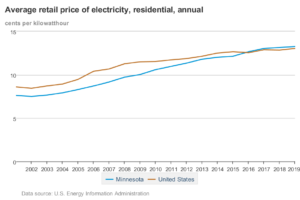Electricity use in the United States is around 1000 kWh per month on average. If they used it more often, they could save a lot more money. Reduced energy consumption in the house saves a lot of money, improves energy security, and lowers pollution through non-renewable sources of energy.

You may save energy at home in a variety of ways. Decreasing your Electricity Plans demands will be the first step in installing a solar electricity system or a small wind generator since it enables you to buy a smaller and far less expensive service.
- Appliances and electronics—Buy and maintain energy-efficient products. To save money, invest in a high-quality power strip.
- Electricity wasted while gadgets are not used is referred to as “vampire loads.”
- Buy energy-efficient equipment, handle it properly, and use energy-efficient doors and projectors to add extra daylight to the home.
- Invest in and manage energy-saving power systems. Make use of energy-efficient doors and incorporate solar passive elements into your house. Ensure that your home is properly insulated and sealed. Choose a non-electric, energy-saving heating system.
- Water boils with electricity. Purchase and run an energy-rated heat pump water heater.
- Look for old equipment (like VCRs!) that people don’t even use. Alternatively, you may be able to turn off or dispose of the extra fridge. You could have “vampire loads” if you’ve had a digital system in your house and can check your hourly usage.
Time-dependent electricity rates
Many suppliers are launching initiatives to encourage consumers to use energy during off-peak hours. The savings are passed on to us, the consumers, in the form of refunds or lower electricity rates. Customers can programme how and when their homes use energy using smart metres and home energy management systems.
Think about running your dishwashing late in the evening and using a solar-powered heat or air-conditioning programme that will help heat the home throughout the colder months.
Electricity prices are influenced by a number of things.
Sometimes in for-profit utilities’ power pricing, a financial reward for stakeholders and investors is included. The cost of electricity Plans is influenced by a number of factors:
- Fuel costs may rise during periods of extreme electrical demand rather than when there have been fuel supply bottlenecks or outages due to harsh weather or unintentional damage to transportation infrastructure. Higher gasoline costs could also mean higher electricity prices.
- Financing, building, maintenance, and operation costs are all part of the total cost of ownership for a power plant.
- Construction, operating, and construction costs are associated with energy transmission and distribution networks which connect power plants to customers. Repairing damage to equipment due to accidents or extreme climate occurrences, as well as defending them from intruders as well as other threats like water leakage and cyber-attacks, are all included in these expenditures.
- Temperature extremes can raise heating and cooling consumption, and the associated rises in electricity consumption can raise fuel and electricity Plans costs. The lack of generated electricity can put higher pressure on some other energy/fuel resources and costs while there are shortages or competing priorities for water supplies, or even when wind speeds fall.







